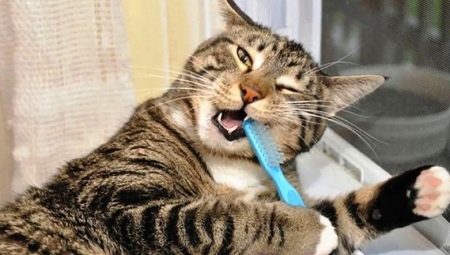Having decided to have a cat at home, a person takes responsibility for his life. In addition to creating comfortable conditions for living and feeding the animal, it needs constant care. Particular attention should be paid to the teeth of cats, which must be periodically cleaned. Otherwise, the pet may have serious problems with the oral cavity. How to properly brush a cat’s teeth at home will be discussed in this article.
How often do you brush your teeth?
Cats belong to those animals that independently monitor their hygiene. However, this does not mean that pets do not need additional care. In cats, as in humans, problems with the oral cavity can occur, which are most often associated with improper dental care.
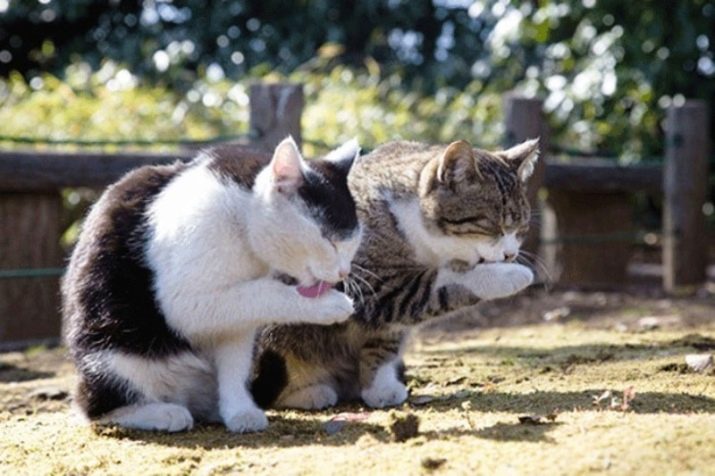
In a natural habitat, all cats are forced to independently obtain their own food and hunt. Wild animals often have to eat solid foods and bite bones.
Thus, cats regularly clean tooth enamel, preventing salt deposits on it and removing food debris.
Domesticated individuals often feed on soft feeds and do not have the ability to remove plaque from their fangs. Slices of food may also persist in the oral cavity, and salt deposits may appear. Over time, stones form in areas adjacent to the gums.
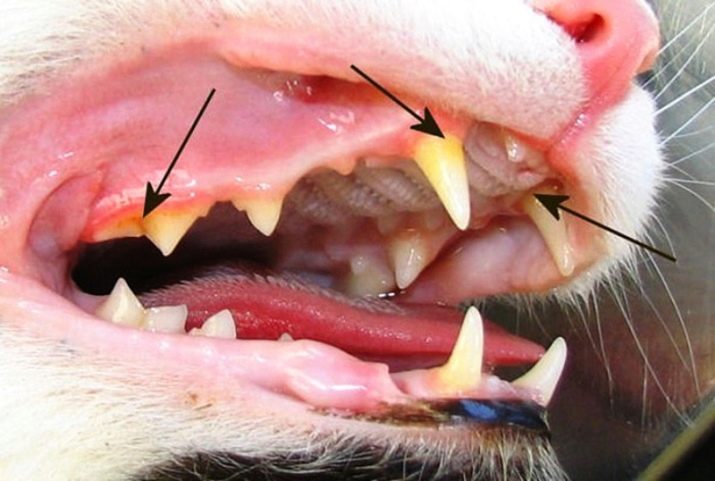
In advanced cases, the bacteria spread to the soft tissues, an unpleasant odor appears from the mouth. Gums first become inflamed, and later may begin to bleed. If you do not take timely measures to treat the pet, then his teeth will begin to fall out. To avoid such pet health problems, it is better to take care of the condition of his teeth in advance.
If the animal’s oral cavity has not been cared for for a long time, and problems have already begun to appear with enamel or gums, you should contact your veterinarian. In this case, you may need specialized cleaning at a veterinary clinic.

Typically, cats do not need daily oral cleansing. It is enough to carry out a procedure to clean the enamel at least once a week. However, in some cases, the teeth of the pet will require more thorough and frequent care.
If a pet eats mainly canned cat food and other soft foods, then brushing your teeth is best done three to five times a day. Due to improper procedure or the use of ineffective means, the animal may get bad breath or a coating of enamel. In this case, you need to start brushing your cat’s teeth more often and thoroughly.
Small kittens do not need to clean their mouth, as they retain milk teeth until they are 3-5 months old. However, during this period, you can gradually accustom animals to cleaning. You can start with a simple massage of the gums, and then move on to the "acquaintance" of the animal with a brush.
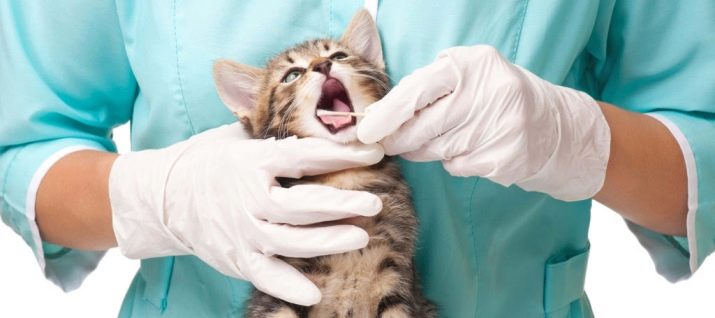
Necessary tools and tools
There are several ways to clean cats ’mouths. Appropriate tools and tools are selected depending on the technique used. The standard set for the procedure is a special brush and toothpaste or gel.
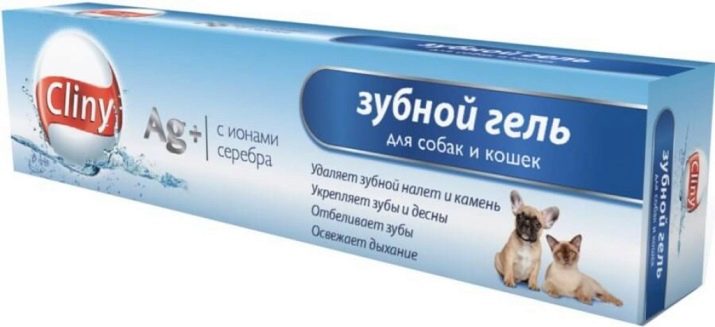
You can purchase the necessary tools at pet stores. Brushes can vary in size and shape. Specials are on sale. massage and fingertips with bristles. However, this method is unsafe, since not all cats allow fingers to touch their teeth, they can even bite.
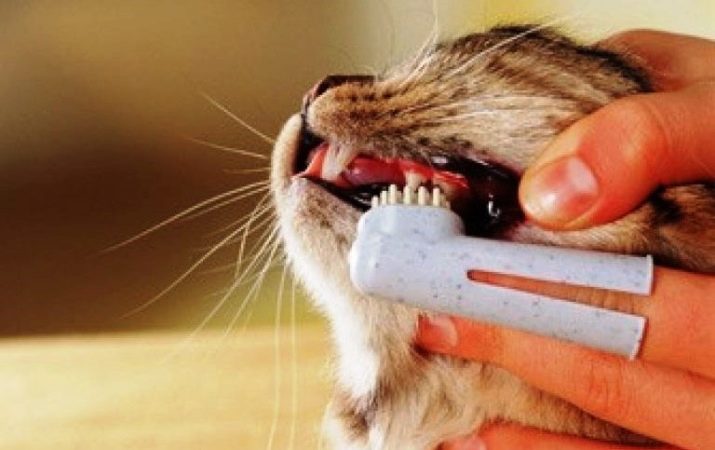
It is allowed to use a toothbrush for children, as it has a soft pile and will not damage the gum of the cat. As an alternative method of cleaning, take a piece of soft tissue and wrap them with the index finger.
As for toothpastes for cats, unlike toothbrushes they cannot be replaced by human means. This is due to the fact that animals do not spit the paste and do not rinse their mouth after it. Therefore, means for people can harm the cat, even lead to poisoning.
In pet stores and veterinary clinics you can find pasta with aromas of various products, such as meat and fish. The animal can attract taste by facilitating the enamel cleaning process. Some cats categorically do not accept the mechanical method of enamel cleansing.
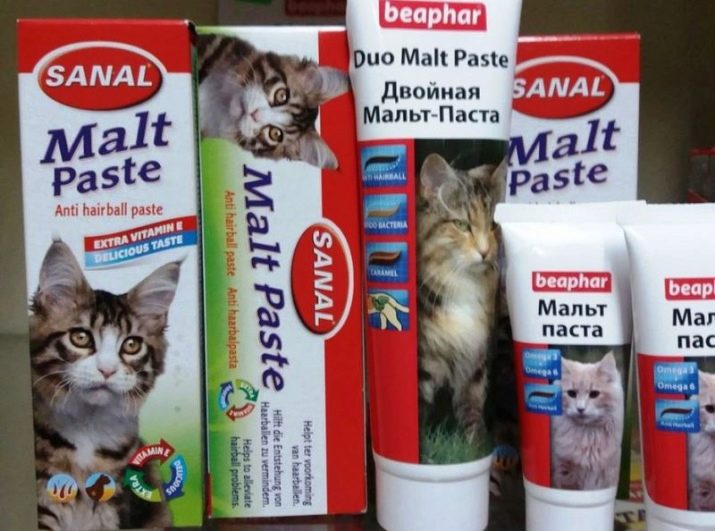
In this case, you can purchase special fluid. It is bred in water, which is given to drink to the pet. The composition of the tool includes special components that allow you to remove plaque from the teeth and clean the oral cavity of bacteria. It is also recommended to include more solid foods in the animal’s menu.
Periodically, you can give the pet a gnaw of chicken bones. Pet shops sell special treats that help cleanse plaque from tooth enamel, such as chewing sticks.
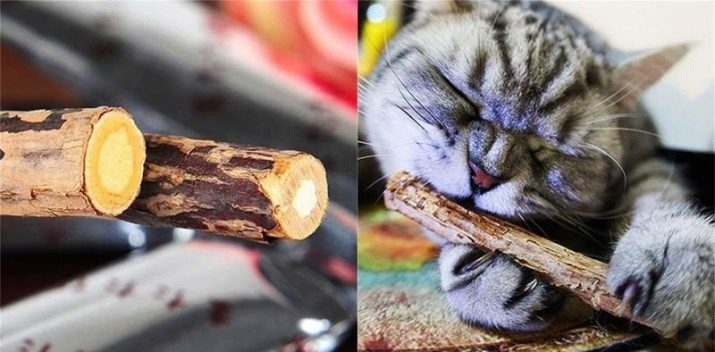
Hard or sharp objects, such as toothpicks, cannot be used to clean the oral cavity, as they can injure the animal.
Procedure
Before you begin to regularly brush the animal’s teeth, it is advisable to prepare for this procedure. Otherwise, the cat may react aggressively to attempts to put a foreign object into his mouth. If the pet's enamel will be cleaned with a special fingertip or a piece of soft tissue, it is important that he is used to finding the owner’s finger in his mouth.
Training can begin with a gentle massage of the gums. And you can also coat your finger with something tasty and attractive to the pet, and let it lick the skin. If toothpaste and a brush will be used for cleaning, it is necessary to give the cat a preliminary familiarization with these items.
Let the pet sniff the brush and gnaw the stubble. Squeeze a little toothpaste from the tube, and let the cat taste the composition. If the animal refuses to independently lick the product, then a small amount of paste is applied to the tip of the nose. Thus, the cat will be able to try and appreciate the taste of the composition.
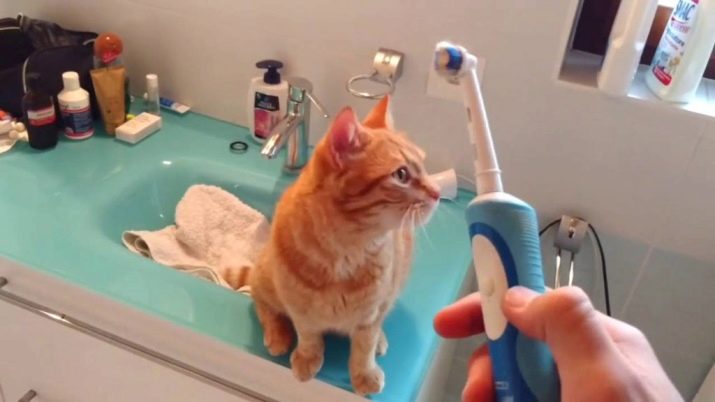
If the pet has liked the tube mixture, then a small amount can be applied to the toothbrush and let the animal lick it. Before starting to cleanse the entire oral cavity, it is recommended to start accustoming the cat to the procedure, periodically applying a paste to the front teeth.
The process of cleaning the oral cavity of a cat may seem complicated only at first glance. If you follow the basic recommendations and gradually accustom the animal to this procedure, then there will be no difficulties in the cleaning process.
For the first time, you can use cotton buds to clean the enamel, since not all cats quickly get used to the toothbrush.
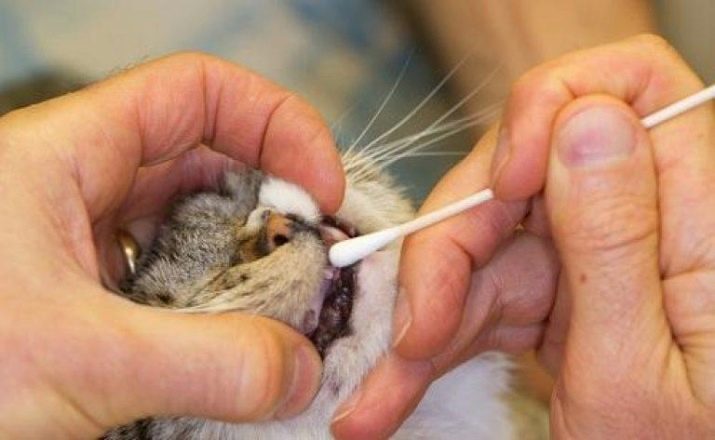
Before starting the procedure, it is important to make sure that the animal is in a good mood and not experiencing stress. But it is also important that the cat is healthy and well-fed. It is not recommended to disturb the pet during sleep and intentionally wake him up only for the purpose of brushing his teeth.
The cat must be locked in a comfortable position. It is most convenient if the animal will be back to the owner, as in the case of resistance, the pet will start pushing and backing away. It is advisable to partially limit the pet in the possibilities of movement, for example, holding it between the legs or swaddling it in a sheet.
Carrying out such manipulations, one should remember the safety of the cat. In no case should you squeeze the animal strongly. Before you start cleaning, squeeze a small amount of paste onto the toothbrush. Next, you need to take the pet by the head.
It is most convenient to do this from above, pressing the ears with your palm, and place your index finger in the corner of your mouth. So it will be easier to fix the jaw in the open position. Brushing begins with the front teeth, brushing them up and down.

Do not forget that you need to brush not only the outside of the teeth, but also the inside. After cleaning the front fangs, it is necessary to pull the pet's cheek on one side and tackle the back teeth. Next, the procedure is repeated with the opposite side. All movements must be careful so as not to harm the animal.
In total, the procedure takes no more than one minute, but for the first time it may take longer.
Veterinarian Tips
One of the common mistakes when brushing your teeth in cats is rushing. Each animal can respond differently to this procedure. Some individuals quickly get used to cleaning the mouth strip, and someone will need more time. Impatience and assertiveness can only frighten a pet or cause him irritation and aggression.
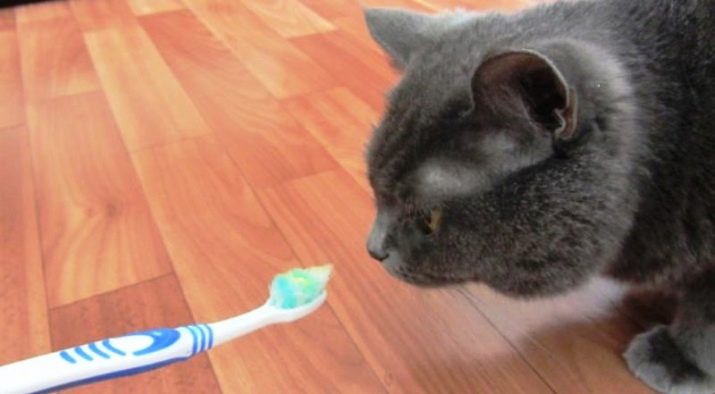
Even if the pet can easily tolerate brushing, such a process is most often stressful for him, especially at first. So that the cat does not keep evil on the owner, after the manipulations are done, it is recommended to pamper the animal with his favorite treat.
In addition to encouraging delicious food, the pet needs to be reassured by stroking. It is best to establish a clear mode for the procedures, as this will help the cat to get used to them faster.
If several cats live in the house, then each animal should have its own toothbrush.

Before starting regular cat tooth enamel brushing, it is recommended to visit a veterinarian. The doctor will be able to assess the condition of the oral cavity of the animal and give basic recommendations for the procedure and the selection of the necessary funds. If there are problems with the teeth, the doctor will carry out professional cleaning in the clinic.
Some cat owners resort to using non-standard cat brushing products. For example, soda and wine or hydrogen peroxide.This method of cleaning the oral cavity can not be called absolutely safe for the pet. If used improperly, such products can adversely affect the condition of the gums and the health of the cat.
See how to brush your cat’s teeth at home in the next video.
